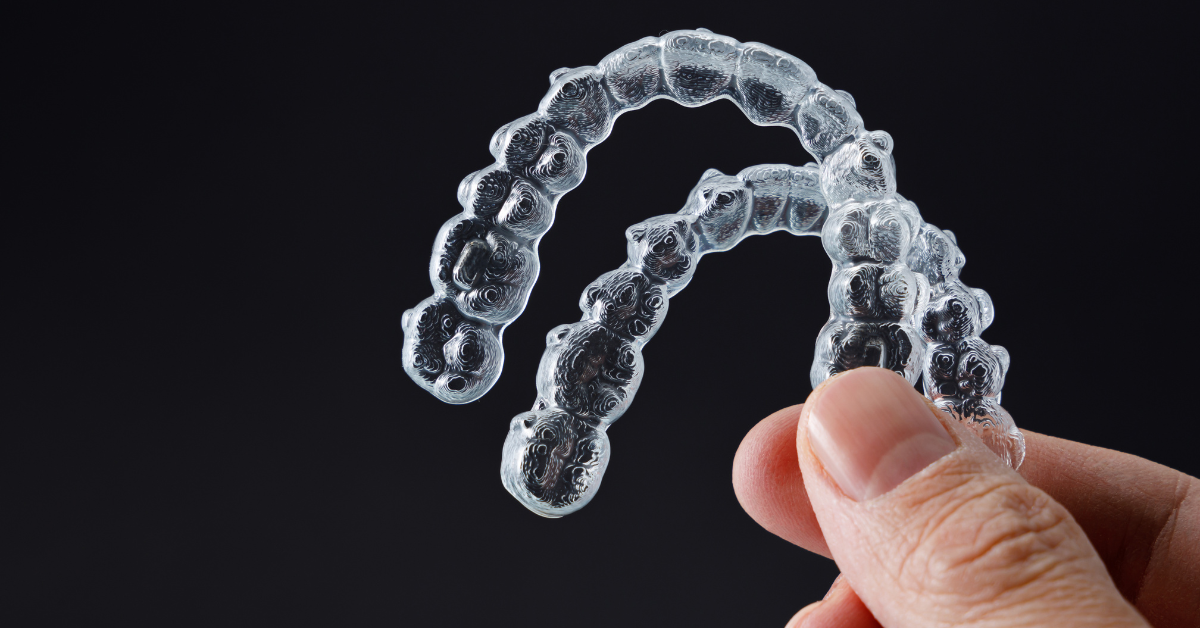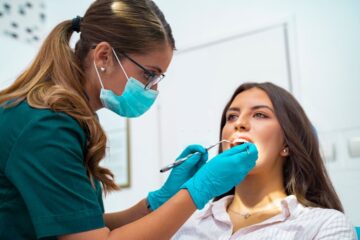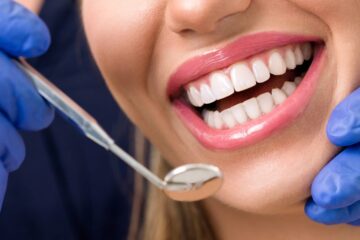While you weigh the wonders of wireless teeth-straightening with Invisalign, it’s critical to consider the caveats that could curtail its candidacy for certain conditions.
If you’re grappling with severe orthodontic issues, the subtle shifts that Invisalign offers might not suffice.
Youngsters still sporting a smile speckled with baby teeth may need to bide their time before banking on these clear aligners.
Similarly, if you’re someone with dental implants or who struggles with maintaining meticulous oral hygiene, you might find the Invisalign journey a bit bumpy.
And for the smokers and tobacco users, the transparent trays could tarnish, diminishing the discretion that Invisalign is known for.
To uncover whether you fall into these categories, consider the nuances of your own dental landscape and what they might mean for your suitability for this discreet dental intervention.
Key Takeaways
– Severe orthodontic issues such as severe overbites, underbites, crossbites, or significant tooth rotations may require alternative treatments to Invisalign.
– Invisalign may have limitations in addressing multiplanar movement and significant dental crowding.
– Invisalign is not recommended for young children with baby teeth as their dentition is still developing.
– Dental implants must be assessed for compatibility and their position to ensure they do not interfere with tooth movement during Invisalign treatment.
Severe Orthodontic Cases
While Invisalign offers a discreet and convenient solution for many patients, it’s crucial to assess its effectiveness in severe orthodontic cases, where complexity may dictate alternative treatments. Complex malocclusions, such as severe overbites, underbites, crossbites, or significant tooth rotations, often exceed the corrective capability of clear aligners. In these instances, you may find traditional braces or adjunctive appliances to be more efficient in manipulating tooth position and jaw alignment.
Orthognathic surgery is another consideration when the skeletal discrepancies are too profound for Invisalign to correct. This type of surgery, often performed in conjunction with fixed orthodontic appliances, realigns the jaws to improve both function and aesthetic appearance. It’s not uncommon for cases requiring surgery to necessitate more precise control over tooth movement than what Invisalign can offer.
You should also be aware that while Invisalign technology continues to advance, addressing multiplanar movement and significant dental crowding, it still holds limitations. For instance, the aligners apply force differently from traditional braces, which can be less effective for certain tooth movements such as rotation of cylindrical teeth.
Ultimately, an expert evaluation of your specific condition will determine the most effective treatment modality. It’s imperative to align expectations with the capabilities of Invisalign to ensure optimal outcomes in complex orthodontic scenarios.
Young Children With Baby Teeth
Although Invisalign is primarily designed for permanent teeth, it’s generally not recommended for young children who still have their baby teeth due to the dynamic nature of their developing dentition. Growth considerations play a crucial role in determining the suitability of orthodontic treatment. In young children, the jawbone is still growing, and baby teeth, which are placeholders for permanent teeth, are in various stages of eruption and shedding.
Invisalign’s custom-fit aligners require a stable dental structure to be effective. Since baby teeth aren’t permanent, they don’t provide a reliable foundation for these aligners. Additionally, as permanent teeth are in the process of tooth eruption, they can alter the fit and effectiveness of the Invisalign trays, leading to unpredictable treatment outcomes.
Furthermore, the constant change in a young child’s mouth may necessitate frequent adjustments to the aligners, making Invisalign less practical and often more costly compared to traditional braces or other early orthodontic interventions designed for this age group.
For these reasons, while Invisalign can be an excellent option for adults and teens with fully erupted permanent teeth, it’s typically unsuitable for young children still navigating the complexities of a developing smile.
Patients With Dental Implants
Moving from the considerations of Invisalign for young children, it’s important to examine its compatibility with patients who’ve dental implants. Implant compatibility is a crucial factor when determining if Invisalign is a feasible option. Unlike natural teeth, which can be moved through orthodontic forces, dental implants are anchored directly to the jawbone. Therefore, they don’t have the same capacity for movement.
When you’re considering Invisalign, the presence of implants introduces movement limitations that must be carefully assessed. Invisalign works by applying controlled force to teeth to shift them into the desired position. However, since implants can’t move in the same manner as natural teeth, they may compromise the overall movement strategy for aligning the remaining natural teeth.
Your dental professional will conduct a thorough examination to determine if the position of your implants will interfere with the intended path of tooth movement. If the implants are located in an area that doesn’t impede the movement of adjacent teeth, Invisalign could still be an option. However, in cases where implants are situated in critical areas, alternative orthodontic treatments might be recommended to achieve the desired results without compromising the integrity of the implant or surrounding teeth.
Individuals With Poor Oral Hygiene
For individuals with poor oral hygiene, Invisalign treatment necessitates a commitment to meticulous cleaning practices, as neglect can lead to severe dental complications. The transparent aligners, which must be worn for the majority of the day, can trap food particles and bacteria against the teeth and gums. This environment is conducive to the proliferation of harmful microbes, increasing the risk of gum disease and dental decay.
Maintaining optimal oral health during Invisalign treatment is crucial. If you’re prone to neglecting regular brushing and flossing, you may exacerbate existing conditions or facilitate new issues. The aligners require cleaning every time they’re removed, which should coincide with your brushing schedule. Failure to adhere to these protocols can accelerate plaque buildup and tartar formation, further compromising your oral health.
Additionally, Invisalign is less effective if you already suffer from gum disease or significant dental decay. The movement of the teeth may be unpredictable if the supporting structures are weakened. Therefore, achieving the desired orthodontic outcome is contingent upon a foundation of healthy teeth and gums. If you can’t commit to the enhanced cleaning regimen, Invisalign may not be the most suitable option for your orthodontic correction.
Smokers and Tobacco Users
Smokers and tobacco users considering Invisalign must be aware that nicotine can compromise the effectiveness of the treatment and potentially lead to additional oral health issues. The clinical implications of nicotine effects are multifaceted:
– Nicotine effects on oral health:
– Staining of aligners: Nicotine can lead to the discoloration of the clear aligners, undermining their aesthetic advantage.
– Impaired healing: Nicotine constricts blood vessels, reducing blood flow and affecting the mouth’s ability to heal.
– Increased risk of periodontal disease: Tobacco use exacerbates the risk of gum diseases, which can be detrimental to orthodontic treatment outcomes.
Compliance challenges further exacerbate the situation for smokers and tobacco users. Invisalign requires rigorous adherence to a treatment protocol, which includes:
Wearing aligners for the recommended time:
– Aligners must be worn for 20-22 hours per day, and smoking with aligners can affect this schedule due to the need for removal during smoking.
Maintaining optimal oral hygiene:
– Smoking can compromise oral hygiene, necessitating more effort to maintain the health required for successful Invisalign treatment.
Regular follow-up appointments:
– Tobacco users may face increased complications that require closer monitoring, potentially leading to more frequent dental visits.
Analysing these factors with a clinical lens underscores the heightened risks and demands placed on smokers undergoing Invisalign treatment.
Frequently Asked Questions
How Does Invisalign Treatment Affect Individuals With Temporomandibular Joint (Tmj) Disorders?
Invisalign treatment may exacerbate TMJ disorders by altering your TMJ anatomy, potentially increasing discomfort. You’ll need expert guidance and stress management techniques to mitigate adverse effects on your temporomandibular joint health.
Can Invisalign Be Considered for Patients With a History of Periodontal Disease and Bone Loss?
You can consider Invisalign with a history of periodontal disease, but your gum health and bone integrity must be stable. Consult your dentist to assess if your oral condition permits this treatment.
How Does Invisalign Work for Patients With a High Cavity Rate or Those Who Frequently Require Dental Fillings?
Invisalign demands diligent cavity prevention; you’ll need regular check-ups. High cavity rates complicate treatment, as frequent filling adjustments may alter aligner fit, requiring expert analysis to ensure your dental health isn’t compromised.
Is There an Age Limit for Patients Considering Invisalign, and How Does Age Impact the Effectiveness of the Treatment?
You’ll find age isn’t a strict limit for Invisalign, but treatment maturity matters. Older patients often show excellent compliance, potentially enhancing the effectiveness of the aligners due to their commitment to the regimen.
Can Invisalign Aligners Be Customised to Fit Around Bridgework or Other Non-Removable Dental Prostheses?
You’ll find that Invisalign aligners can indeed be tailored for bridge accommodation, ensuring a precise fit despite the presence of fixed dental prostheses like bridgework through meticulous prosthesis adaptation.
Conclusion
In the orthodontic garden, Invisalign is the subtle wind guiding saplings to grow straight. However, for the gnarled oaks of severe cases, or the saplings still mixed with baby teeth, traditional braces may be the sturdy trellis.
Implants, like ancient stones, resist this gentle breeze. Meanwhile, neglectful care, akin to withering drought, and the smog of tobacco, thwart the wind’s efforts.
Invisalign’s grace is potent, yet it isn’t the gardener for every crop.





